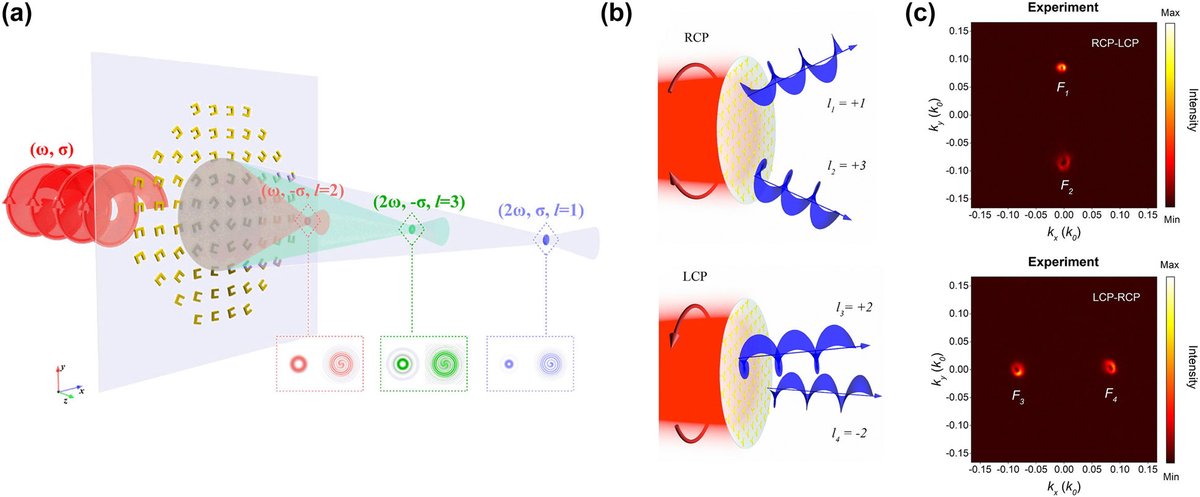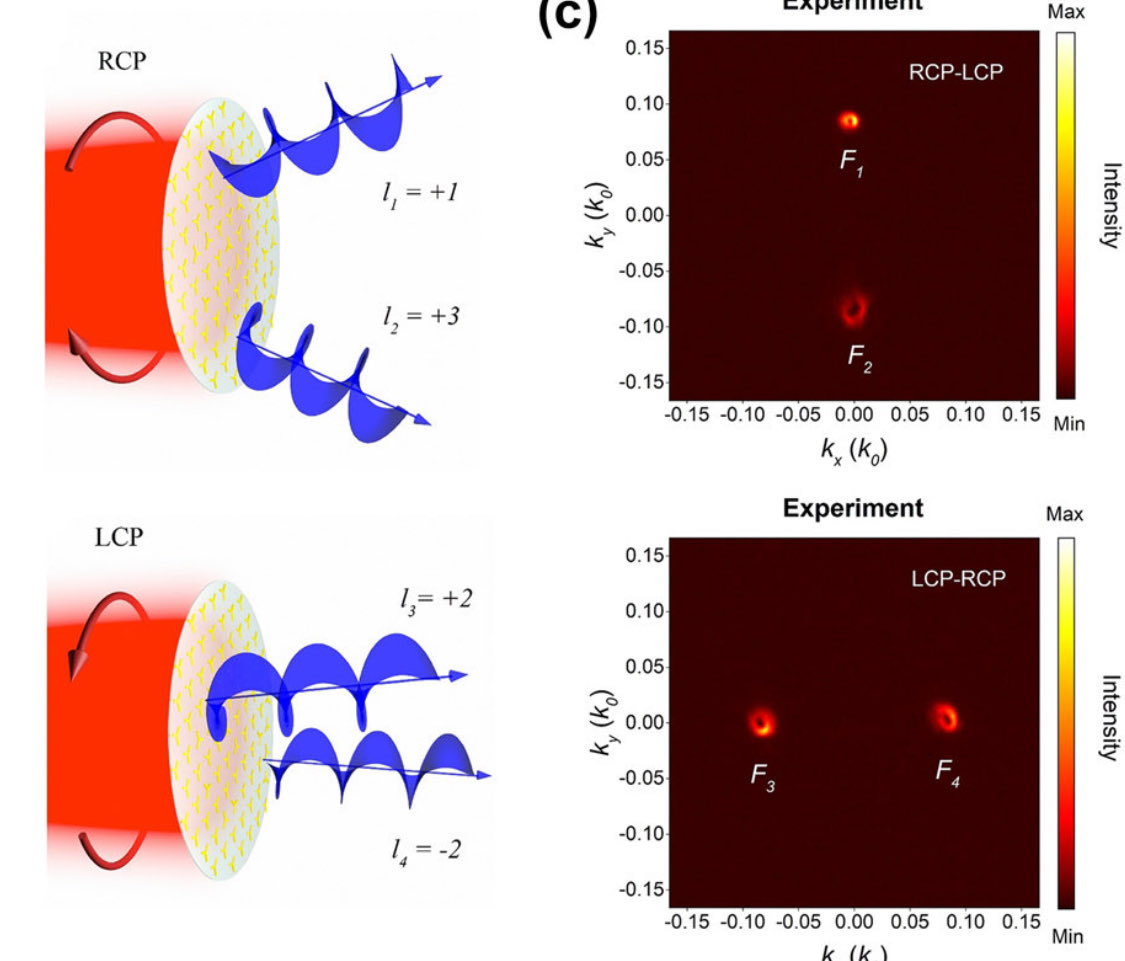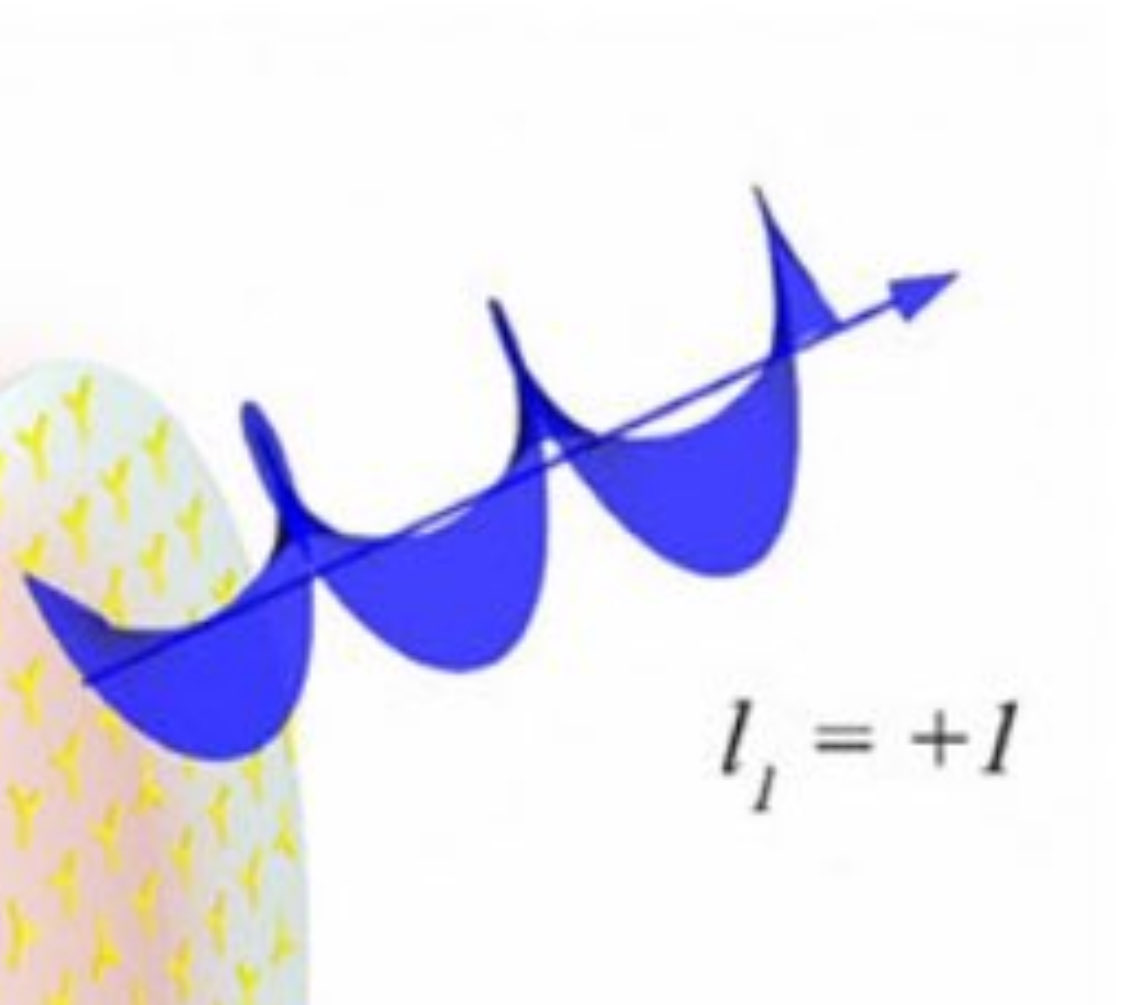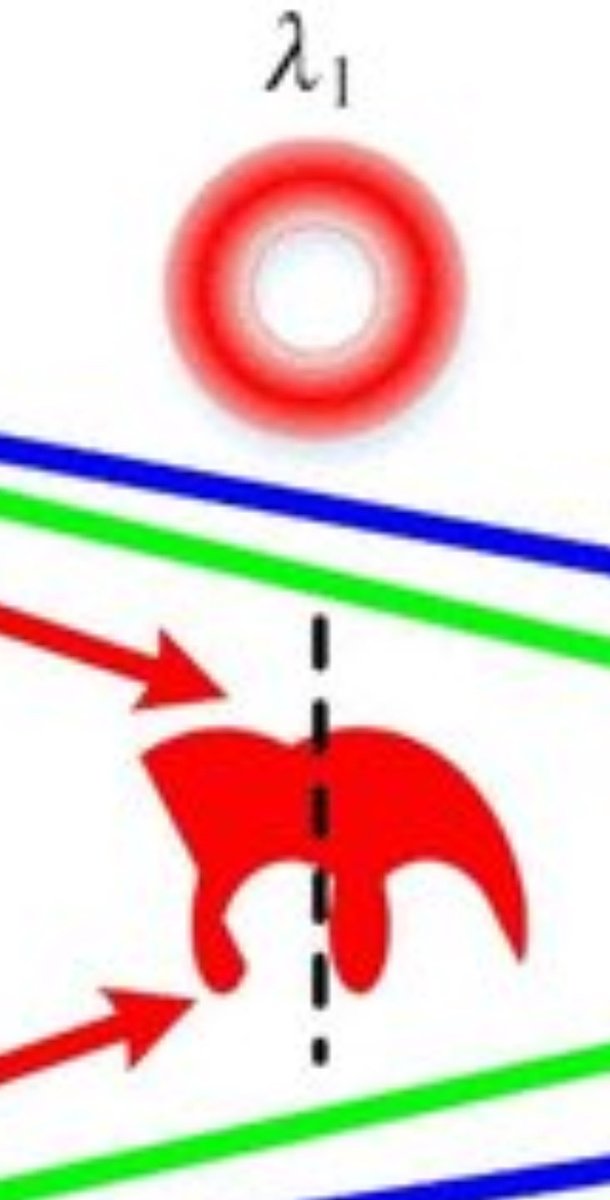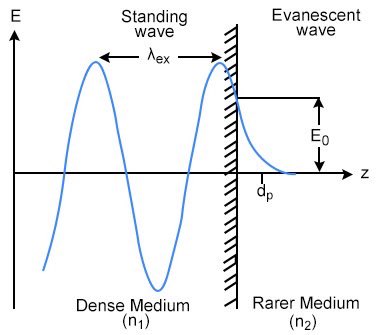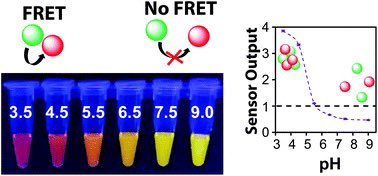The diagram illustrates the process of using laser beams with orbital angular momentum (OAM) to study the photoionization of a gas jet and the resulting photoelectron momentum distribution. The core components and their roles in the experiment are as follows:
•Input OAM beam (circularly polarized): This is an intense, twisted laser pulse that carries OAM and is used to ionize the atoms in the gas jet. Its spiral phase front is a key characteristic.
•Gas jet: This is the target material, typically an inert gas like argon, which is ionized by the OAM beam.
•Probing diffracted beam (circularly co-polarized): A second, weaker laser beam is used to probe the interaction and alter the momentum of the ionized electrons, which helps to distinguish between different OAM states.
•Photoelectron momentum distribution: The ionized electrons (e-) are ejected and their momentum distribution is measured. This distribution, which appears as a ring or a more complex pattern, provides information about the interaction of the OAM beam with the atoms.
•Output OAM beam (unaffected): The primary OAM beam continues on its path after interacting with the gas jet. The method is considered "nondestructive" to the original pulse, meaning the pulse itself is not significantly altered.
The experiment is a theoretical and computational approach to study strong-field ionization. It aims to develop a method for determining the magnitude of the OAM carried by a laser beam by analyzing the momentum of the photoelectrons.
•Input OAM beam (circularly polarized): This is an intense, twisted laser pulse that carries OAM and is used to ionize the atoms in the gas jet. Its spiral phase front is a key characteristic.
•Gas jet: This is the target material, typically an inert gas like argon, which is ionized by the OAM beam.
•Probing diffracted beam (circularly co-polarized): A second, weaker laser beam is used to probe the interaction and alter the momentum of the ionized electrons, which helps to distinguish between different OAM states.
•Photoelectron momentum distribution: The ionized electrons (e-) are ejected and their momentum distribution is measured. This distribution, which appears as a ring or a more complex pattern, provides information about the interaction of the OAM beam with the atoms.
•Output OAM beam (unaffected): The primary OAM beam continues on its path after interacting with the gas jet. The method is considered "nondestructive" to the original pulse, meaning the pulse itself is not significantly altered.
The experiment is a theoretical and computational approach to study strong-field ionization. It aims to develop a method for determining the magnitude of the OAM carried by a laser beam by analyzing the momentum of the photoelectrons.
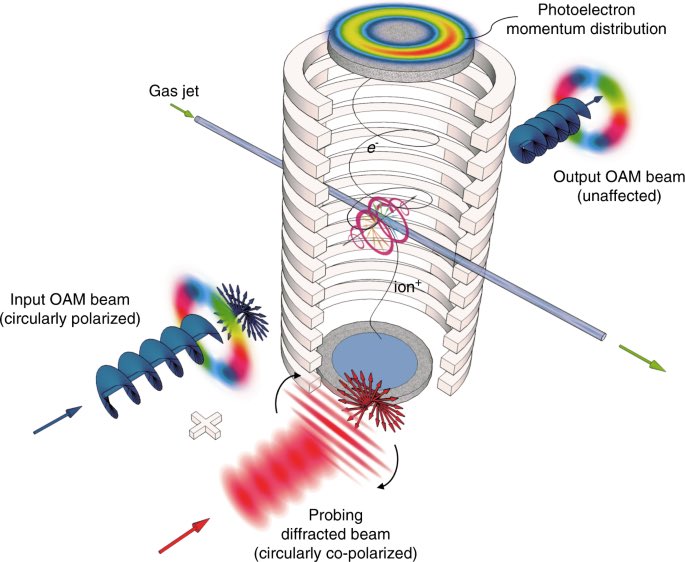
Intense laser ionization expands Einstein's photoelectric effect rules giving a wealth of phenomena widely studied over the last decades. In all cases, so far, photons were assumed to carry one unit of angular momentum. However it is now clear that photons can possess extra angular momentum, the orbital angular momentum (OAM), related to their spatial profile. We show a complete description of photoionization by OAM photons, including new selection rules involving more than one unit of angular momentum. We explore theoretically the interaction of a single electron atom located at the center of an intense ultraviolet beam bearing OAM, envisaging new scenarios for quantum optics.
The image is a schematic diagram of a multibeam rotatable terahertz (THz) array antenna.
•The antenna is based on metallic waveguides.
•It shows how two orthogonal polarization components, 
•E
T
E
𝐸
𝑇
𝐸
and 
•E
T
M
𝐸
𝑇
𝑀
, are combined to produce a rotating beam.
•The control unit is a metallic waveguide with dimensions 
•a
𝑎
,
•b
𝑏
,
•h
ℎ
, and wall thickness 
•T
𝑇
.
•The three-dimensional radiation patterns of the antenna are shown under different phase differences between the two orthogonal polarization components.
•The antenna is based on metallic waveguides.
•It shows how two orthogonal polarization components, 
•E
T
E
𝐸
𝑇
𝐸
and 
•E
T
M
𝐸
𝑇
𝑀
, are combined to produce a rotating beam.
•The control unit is a metallic waveguide with dimensions 
•a
𝑎
,
•b
𝑏
,
•h
ℎ
, and wall thickness 
•T
𝑇
.
•The three-dimensional radiation patterns of the antenna are shown under different phase differences between the two orthogonal polarization components.
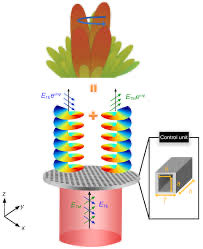
To the point
This is key
Positive +
A separation of charge dipole moment
Relax
Electron hole or proton recombination emitting light
Free energy in theory
Kee P+ in G on
Rotate the dipole
Two separation of vortices within a vortex
God bless
Optical metasurfaces for generating and manipulating optical vortex beams
Take a guess here.
Lipid optical metasurfaces are specialized nanostructured surfaces that combine the unique optical properties of metasurfaces with the biochemical characteristics of lipid membranes. This platform is used to create highly sensitive, label-free biosensors for advanced biological and medical applications. By coating a metasurface with a biomimetic lipid layer, researchers can study dynamic molecular interactions in real-time with exceptional sensitivity.
Lipid optical metasurfaces are specialized nanostructured surfaces that combine the unique optical properties of metasurfaces with the biochemical characteristics of lipid membranes. This platform is used to create highly sensitive, label-free biosensors for advanced biological and medical applications. By coating a metasurface with a biomimetic lipid layer, researchers can study dynamic molecular interactions in real-time with exceptional sensitivity.
•AI and deep learning algorithms can be applied to analyze the rich spectral data obtained from metasurface biosensors. This helps extract features and classify complex molecular behaviors, such as the photoswitching dynamics of lipid membranes.
•Tunable platforms: While some metasurfaces are static, active materials like liquid crystals or graphene can be integrated to create reconfigurable metasurfaces. This allows for dynamic electrical control over the optical properties for applications like sensing and dynamic displays.
•Tunable platforms: While some metasurfaces are static, active materials like liquid crystals or graphene can be integrated to create reconfigurable metasurfaces. This allows for dynamic electrical control over the optical properties for applications like sensing and dynamic displays.

ON OFF…
OFF… ?
TURNING OFF TWO WAVES OF THE SAME FREQUENCY AS A CIRCULAR STANDING WAVE RESONATING WITHIN
OFF… ?
TURNING OFF TWO WAVES OF THE SAME FREQUENCY AS A CIRCULAR STANDING WAVE RESONATING WITHIN
🫶🏻
• • •
Missing some Tweet in this thread? You can try to
force a refresh

